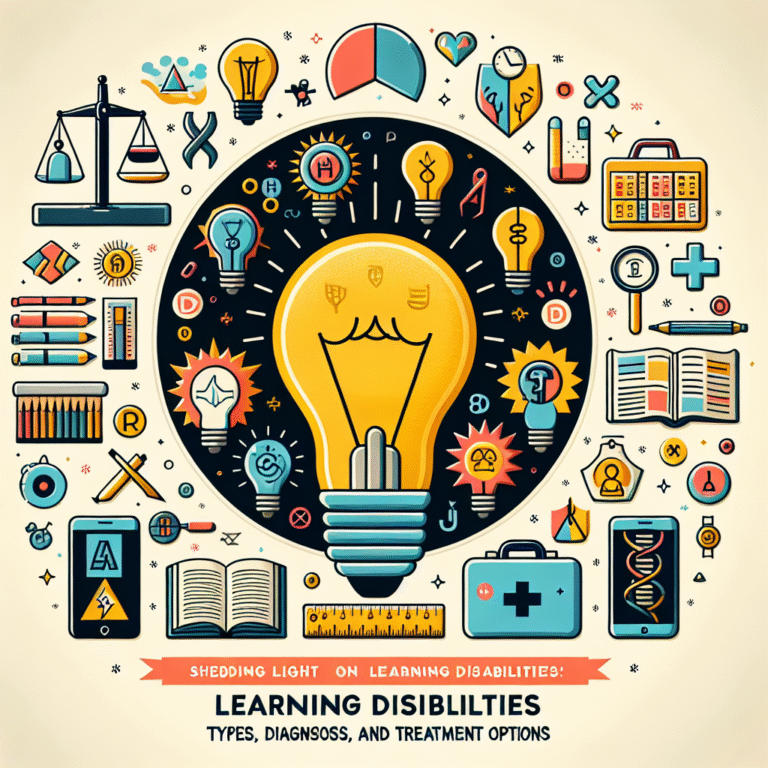
Conquering Compulsions: An Ultimate Guide to Managing OCD
Introduction
Obsessive-Compulsive Disorder (OCD) is a mental health condition that affects millions of individuals worldwide, transcending age, gender, and cultural boundaries. The battle against compulsive thoughts and actions can often feel like an uphill struggle, leaving those affected feeling isolated and misunderstood. In "Conquering Compulsions: A Comprehensive Guide to Managing OCD," we will explore effective strategies, insights, and real-life case studies aimed at empowering individuals to reclaim their lives. This extensive guide will provide the tools necessary for understanding OCD and developing resilience against its challenges.
Understanding OCD
What is OCD?
Obsessive-Compulsive Disorder is characterized by persistent, intrusive thoughts (obsessions) that lead to repetitive behaviors (compulsions) aimed at reducing the distress associated with those thoughts. Common obsessions include fears of contamination, harm, or losing control, while compulsive behaviors can manifest as excessive cleaning, checking, or arranging.
The Science Behind OCD
OCD is recognized as a complex interplay of genetic, neurological, and environmental factors. Abnormalities in brain structures, especially in areas related to decision-making and impulse control, can contribute to the severity of symptoms. Research indicates that neurotransmitters like serotonin play a crucial role in the management of OCD, which is why certain treatments, such as SSRIs, often prove effective.
Different Types of OCD
It is vital to understand that OCD is not monolithic; it can take various forms, each requiring tailored approaches. Below are some common types of OCD:
Contamination OCD
Individuals suffering from contamination OCD have compulsions centered on cleanliness. They often perform cleaning rituals or avoid stimuli they perceive as dirty or contaminated.
Harm OCD
This type involves a constant fear of causing harm to oneself or others. People may engage in excessive checking or reassurance-seeking behaviors to alleviate their anxiety.
Checking OCD
This specific type of OCD involves compulsive checking behaviors related to safety, such as repeatedly ensuring that doors are locked or appliances are turned off.
Symmetry and Order OCD
Individuals may feel a strong need for symmetry, order, or exactness and can become highly distressed when things are out of alignment.
The Impact of OCD
Personal Stories: Real-Life Case Studies
Case Study 1: Sarah, the Perfectionist
Sarah, a 28-year-old graphic designer, struggled with symmetry and order OCD. Every time she completed a design, she felt compelled to rearrange elements until they were “perfect.” This behavior initially seemed harmless but eventually interfered with her work and personal relationships. After seeking help, Sarah learned to implement strategies from Cognitive Behavioral Therapy (CBT), which helped her confront her compulsions and reduce their grip on her life.
Analysis: Sarah’s case illustrates how OCD can disrupt daily functioning and the vital role that effective therapy plays in managing symptoms.
Case Study 2: Mark, the Checker
Mark, a 35-year-old father, struggled with checking OCD. His compulsions led him to check locks repeatedly, wasting hours each day. Through exposure-response prevention therapy (ERP), Mark gradually reduced his checking behavior by exposing himself to his fears without engaging in compulsions.
Analysis: Mark’s journey emphasizes that facing fears directly is crucial in managing OCD, debunking the myth that avoidance alleviates anxiety.
Strategies for Conquering Compulsions
Achieving control over OCD is attainable! The following strategies are essential tools for conquering compulsions:
Cognitive Behavioral Therapy (CBT)
CBT is a proven approach for OCD, combining cognitive restructuring and behavioral strategies to help patients identify negative thought patterns and challenge compulsive behaviors. Considered the gold standard for managing OCD, CBT focuses on altering negative thought processes.
Exposure and Response Prevention (ERP)
As a specialized form of CBT, ERP involves gradually exposing individuals to their triggers and preventing the accompanying compulsive response. This method builds tolerance and reduces anxiety over time.
Mindfulness and Relaxation Techniques
Techniques such as mindfulness meditation can significantly reduce anxiety levels. Being present helps individuals dissociate from intrusive thoughts, allowing greater control over emotions.
Medication
For some, medication may be a necessary adjunct to therapy. Selective serotonin reuptake inhibitors (SSRIs) can lessen symptoms by optimizing serotonin levels in the brain.
Support Groups
Connecting with others facing similar challenges can foster a sense of community and understanding. Support groups provide a platform for sharing experiences and strategies, reducing feelings of isolation.
Lifestyle Changes
Incorporating regular exercise, maintaining a balanced diet, and prioritizing sleep can significantly enhance overall mental wellness. These healthy habits can empower individuals to manage OCD proactively.
Building a Supportive Environment
Support from family and friends is crucial in combating OCD. Here are ways to create a nurturing environment:
- Educate Family and Friends: Understanding OCD can foster empathy and reduction in stigma.
- Communicate Openly: Encourage conversations around OCD experiences. This transparency helps normalize the condition.
- Encourage Professional Help: Support loved ones in seeking treatment through therapy and medication where necessary.
Mapping Progress
Tracking progress can be beneficial in managing OCD. Utilize charts and journals to document:
- Triggers: Note what specific situations lead to heightened anxiety or compulsions.
- Compulsions: Document frequency and type of compulsions experienced.
- Progress: Regularly assess feelings of anxiety and any reductions in compulsive behavior.
Sample Progress Tracking Chart
| Date | Trigger | Compulsion | Level of Anxiety (1-10) | Notes |
|---|---|---|---|---|
| 2023-06-01 | Contamination | Excessive Cleaning | 7 | Felt able to skip cleaning today! |
| 2023-06-02 | Checking | Door Lock Check | 8 | Improved; only checked twice. |
This example helps individuals recognize patterns and celebrate victories in managing OCD.
Conclusion
“Conquering Compulsions: A Comprehensive Guide to Managing OCD” empowers individuals to take back control of their lives. By utilizing the strategies outlined in this guide, those grappling with OCD can learn to manage their symptoms, build resilience, and foster a supportive environment. Remember, the journey may be challenging, but hope, help, and healing are always available.
FAQs About OCD
1. What is the most effective treatment for OCD?
The most effective treatments for OCD often combine Cognitive Behavioral Therapy (CBT), particularly Exposure and Response Prevention (ERP), with medication like SSRIs.
2. How do I know if I have OCD?
If you constantly experience intrusive thoughts that compel you to engage in repetitive behaviors, it’s advisable to consult a mental health professional for a thorough assessment.
3. Can OCD be cured?
While many individuals can significantly reduce their symptoms and regain control, OCD may not have a definitive "cure." However, effective management strategies can lead to a fulfilling life.
4. Is OCD hereditary?
Research indicates a genetic component to OCD; however, environmental factors play a crucial role in its development. A family history of OCD can increase the likelihood of experiencing the disorder.
5. How can I support a friend or family member with OCD?
Educate yourself about OCD, listen without judgment, and encourage your loved one to seek professional help. Offering your support through their treatment journey can be incredibly beneficial.
By following these insights and strategies outlined in "Conquering Compulsions: A Comprehensive Guide to Managing OCD," you can take vital steps toward overcoming this challenging disorder and leading a fulfilling life. Remember, you do not have to face this journey alone!










